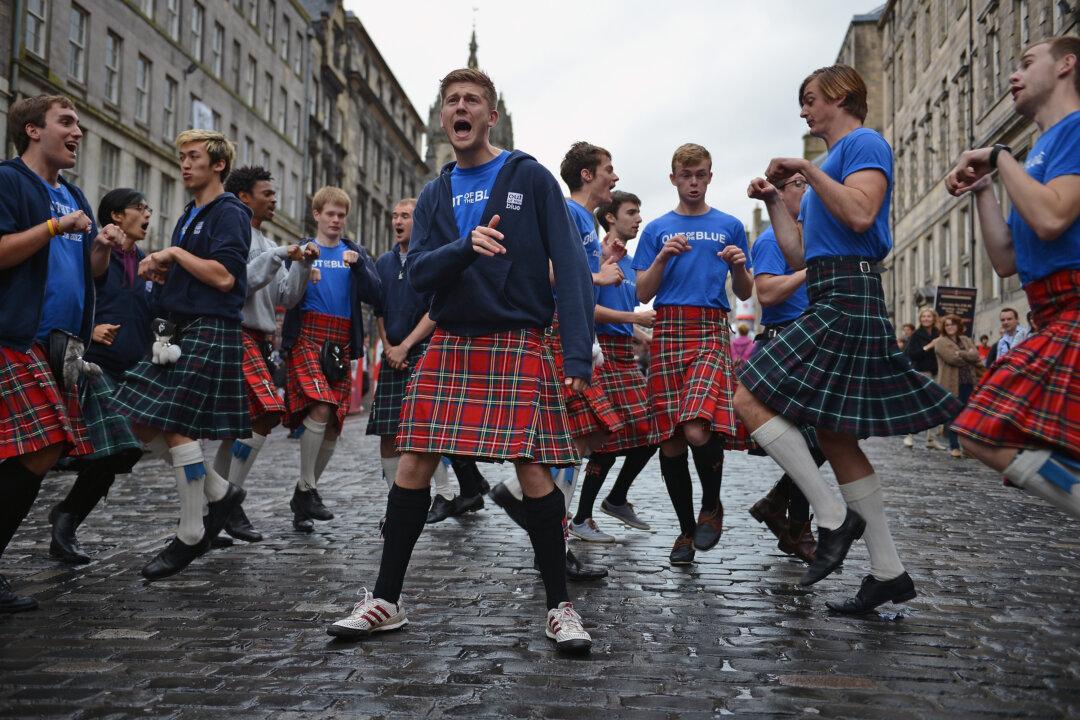Today, Edinburgh is known around the world for its festivals. Indeed, the Edinburgh International Festival just sold over 13,000 tickets for its first weekend – a new record. But in 1947, when the festival began, many were dubious about the prospect. Indeed, in 1948 the famous conductor Sir Thomas Beecham said, “the people of Scotland are damned fools to throw away £60,000 on a music festival.” Coming only two years after World War II, the timing seemed off. Continued rationing, shortages, and a beleaguered British economy felt at odds with the rich cultural feast promised by the inaugural festival.
The first souvenir programme proudly stated that The Edinburgh International Festival of Music and Drama was committed to presenting the “highest and purest ideals of art in its many and varied forms”. There was an emphasis on high culture. Scottish drama was excluded from the programme, on the basis that it did not yet meet the organisers’ high standards.
With this decision, the festival provoked controversy, and inadvertently prompted the creation of a whole new rival one, which would one day overtake it in size. At that very first festival in 1947, eight theatre groups turned up uninvited, organised performance spaces for themselves, and staged their own shows outside the programme of the “official” festival. So began the Fringe, as it later became known.
Festival vs Fringe
In its early days, the Fringe was mainly dramatic, while the festival was initially better known for its programme of music. The material of the Fringe was more likely to be contemporary than classical, and its shows were generally affordable, unlike the relatively expensive festival performances. These characteristics were consolidated when the left-wing Edinburgh People’s Festivals ran between 1951 and 1954, helping give the Fringe a more distinctive identity.
During the 1950s, the Fringe began to promote itself more actively as an alternative festival. It began to print its own programmes, set up a central box office and, in 1958, formed the Festival Fringe Society. A popular form of entertainment at this time was the late-night revue, usually presented by young university students from around Britain.
In 1960, the “official” festival –- apparently peeved by the growing success of these revues –- brought together talent from Cambridge Footlights and Oxford Theatre Group in a Festival revue called Beyond the Fringe. The rest, of course, is history, and the satire boom that it helped to ignite captured the mood of the time: anti-establishment, anti-authority, and slightly anarchic.
The growing influence and impact of contemporary art and its creators became more keenly felt in Edinburgh throughout the 1960s. Across western society, a young, radical avant-garde was mounting an increasingly pervasive challenge to traditional barriers between different art forms. In Edinburgh, this was reflected in new cultural venues like the Paperback Bookshop, the Traverse Theatre Club, and major international conferences on literature and drama held on the official festival programme in 1962 and 1963.

The Fringe has been accused of being both too large and too expensive, too overwhelming, too overrun by comedians, too obsessed with increasing ticket sales year-on-year. (Jeff J Mitchell/Getty Images)
Creative Controversy
Together, these helped to make Edinburgh –- and the fringe in particular –- an attractive space for creative experimentation in the arts. With the “rags-to-riches” legend of Tom Stoppard’s fringe play Rosencrantz and Guildenstern are Dead in the late 1960s, the exciting possibility that the Fringe was a place you could be “discovered” and “make it” was added to the mix. Edinburgh’s reputation as a stronghold for Scottish Presbyterianism, along with the increasing permissiveness of the 1960s, stimulated annual controversies over sex and immorality on the festival stages.
The features of the Edinburgh Fringe we recognise today were mostly present by 1970, albeit on a far smaller scale. In 1971, 78 companies performed at the Fringe; a growth that had nonetheless threatened to overwhelm the Fringe Society. The fringe became more professionalised and, with increased administration and organisation, grew in size. In 1974, the Fringe outsold the official festival for the first time, and has continued to do so almost every year since. Last year alone, 2,402 companies had shows at the fringe.
This growth is partly down to introduction of prizes such as the Scotsman’s Fringe Firsts in the 1970s, and a staggering growth in comedy acts during the 1980s. Another factor is the increasing emphasis on arts festivals as a means of city branding, urban regeneration, and attracting tourists.
The arts festival model that developed during those first 25 years of Edinburgh has become successfully exported all over the world. So-called fringe festivals are now stand-alone events, no longer on the outskirts of “official” festivals. We still have annual controversies, too, be they moral, social or political – look at the recent controversy over the Israeli fringe play The City.
More importantly, there remains a real sense of excitement and possibility, springing from the continued commitment to the original, accidental ideal: that anyone can come and perform.
That said, not everyone is content. The Fringe has been accused of being both too large and too expensive, too overwhelming, too overrun by comedians, too obsessed with increasing ticket sales year-on-year … the list goes on. But after all, arts in general – and the Edinburgh festivals in particular – have always been places where a range of vastly differing views and ideals can be expressed.

